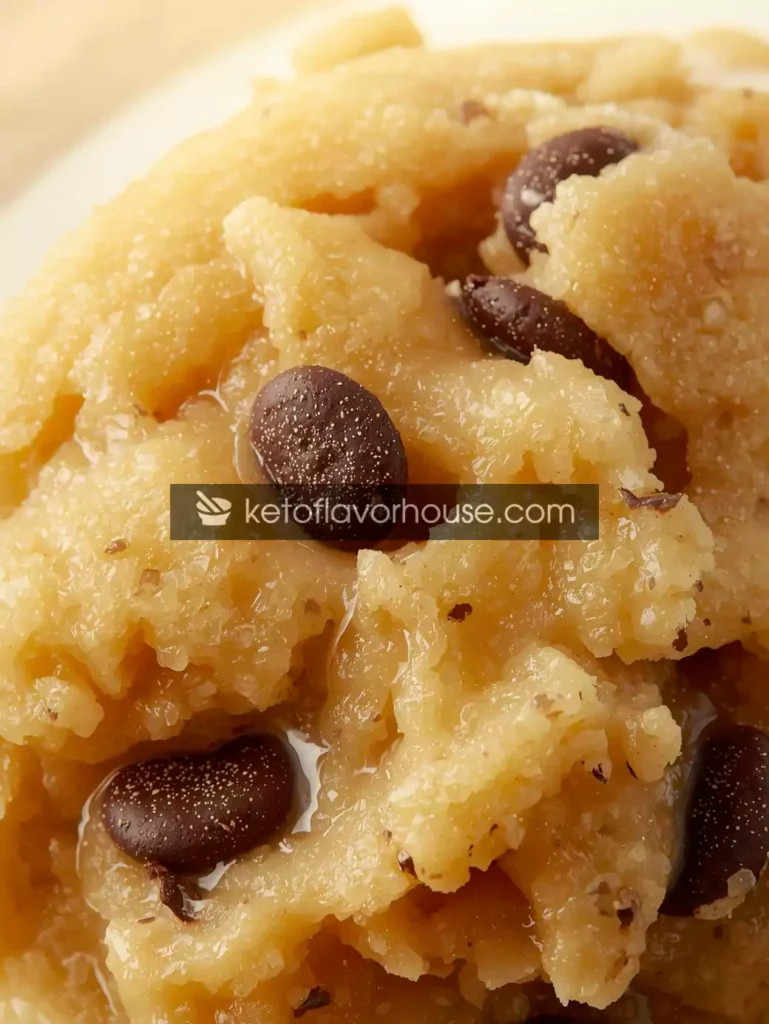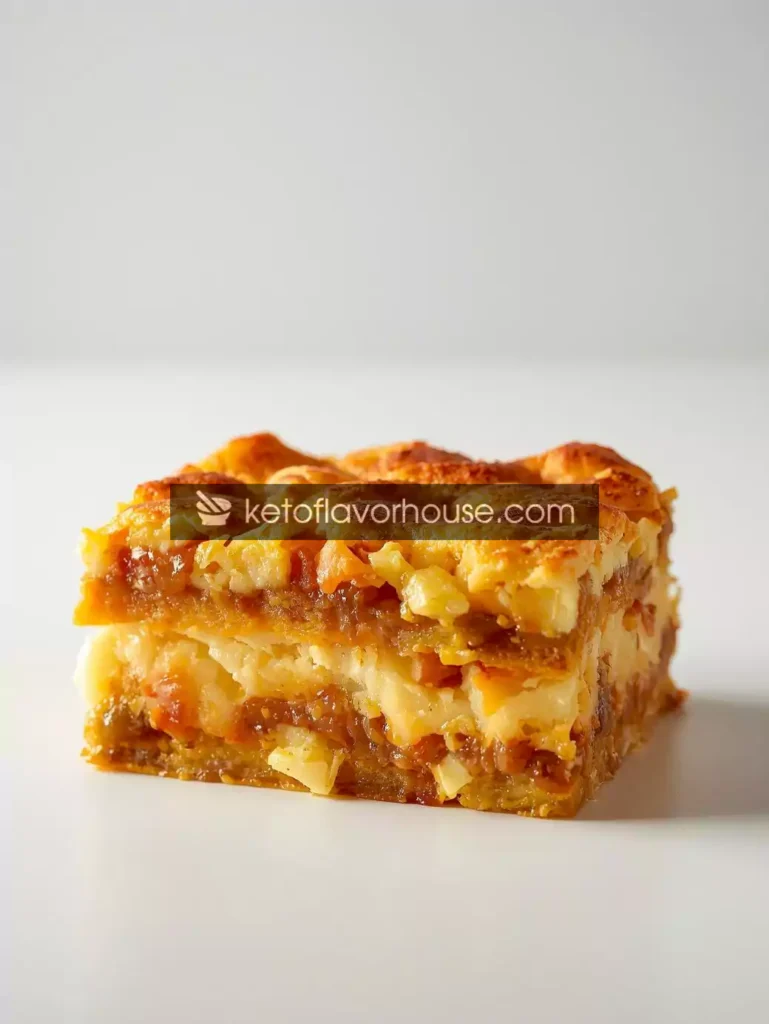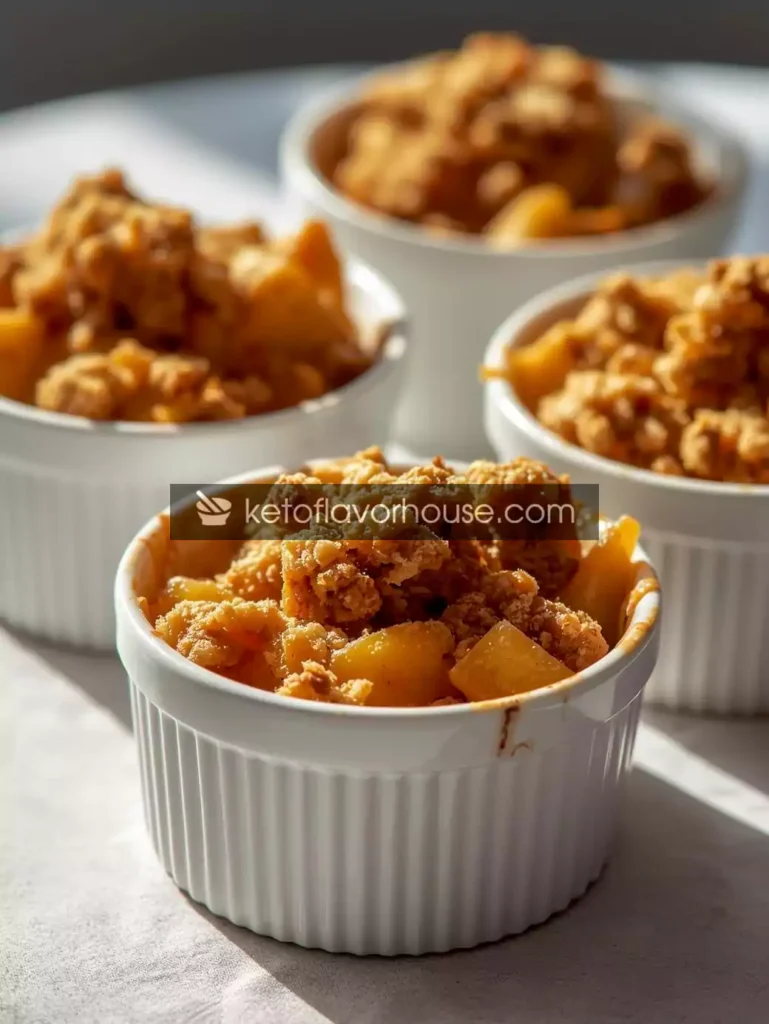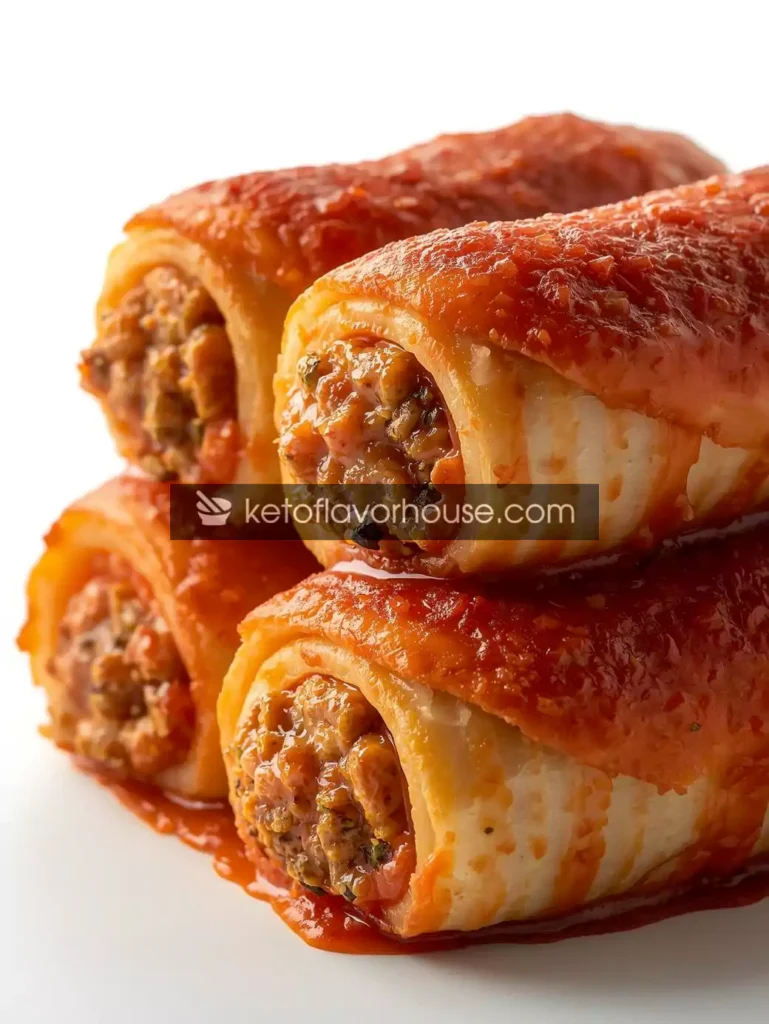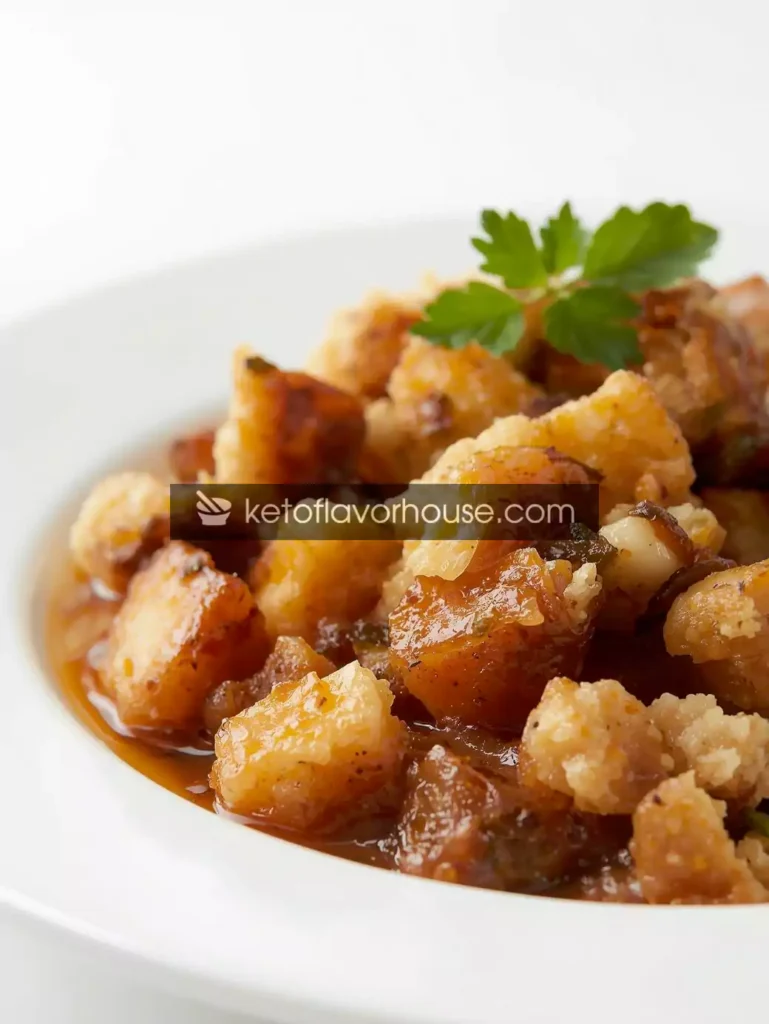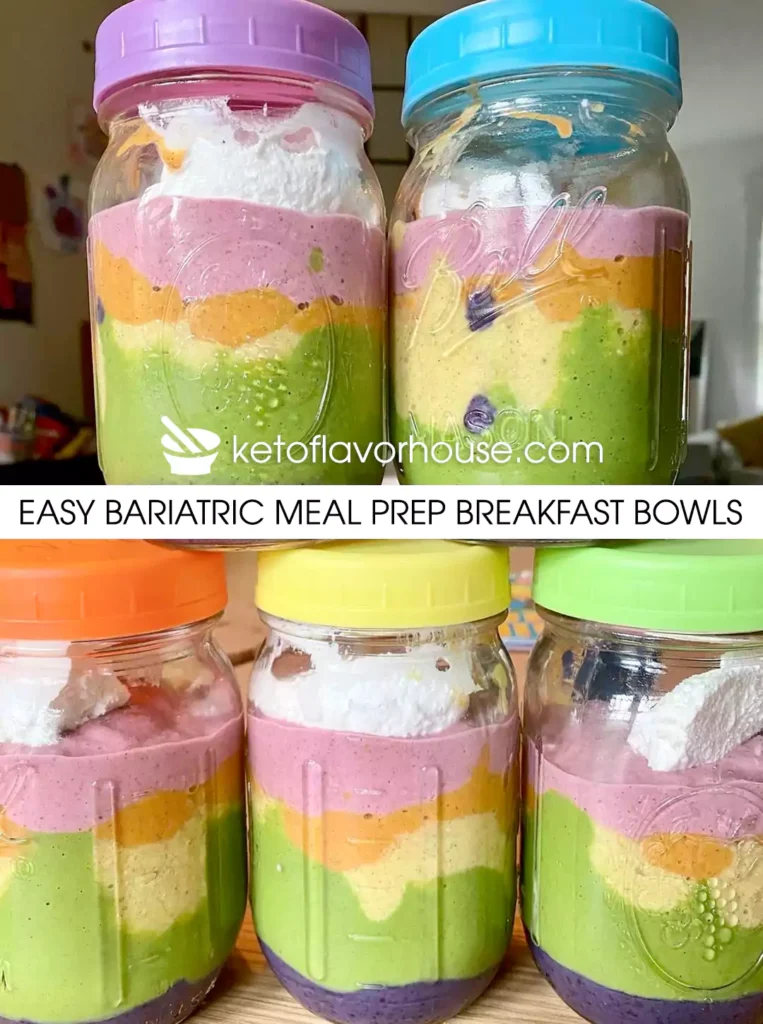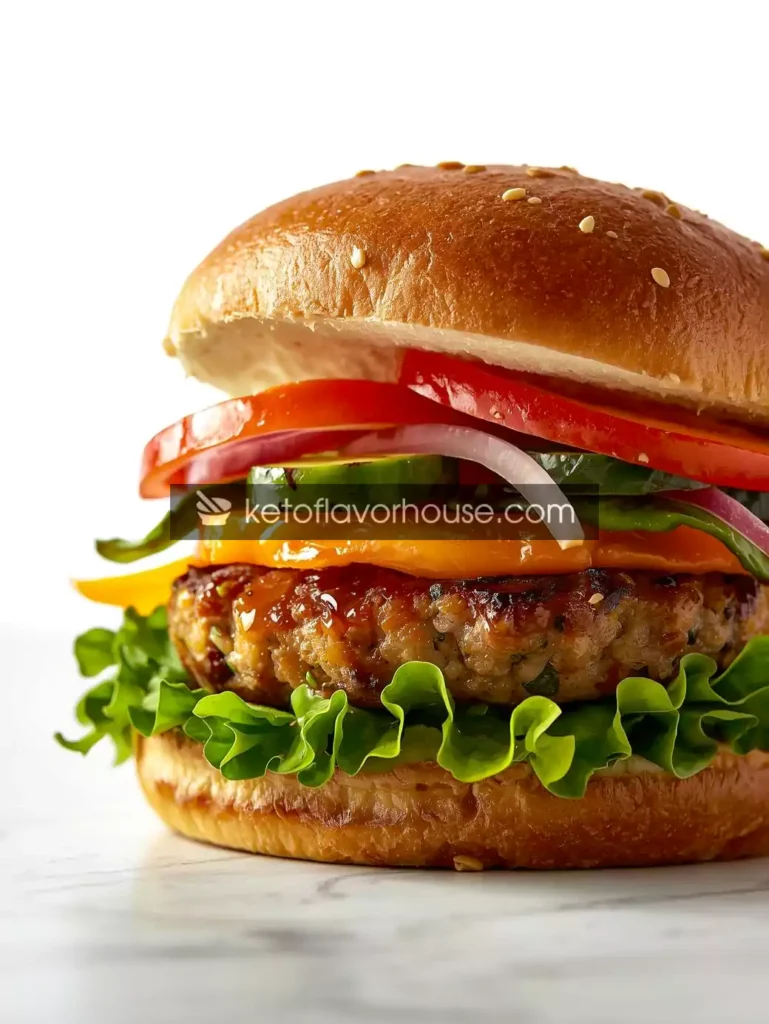This post may contains Amazon affiliate and other affiliate links. If you make a purchase through these links, I may earn a small commission at no extra cost to you. Your support helps me continue to provide quality content. I only recommend products I personally trust and believe will add value to your experience. For more details, please visit my Privacy Policy.
Introduction
There’s something magical about cookie dough. It takes me straight back to childhood afternoons when I’d hover around the kitchen, sneaking a little spoonful of dough before the cookies even made it into the oven. But as comforting as those memories are, traditional cookie dough is often loaded with sugar, white flour, and butter—three things that don’t sit well with a bariatric lifestyle.
That’s where this Bariatric Cookie Dough Recipe (No-Flour & Low-Sugar) comes in. It gives you all the nostalgic sweetness and chewy texture of cookie dough, but with a healthier, protein-focused twist. This recipe is crafted specifically for those who have undergone bariatric surgery or anyone looking for a mindful, low-carb treat. With no white flour, minimal sugar, and lots of bariatric-friendly swaps, it’s the kind of recipe you’ll feel good about enjoying—and sharing.
Not only is this cookie dough safe for post-op diets (when you’re cleared for soft foods and mindful treats), but it’s also versatile. You can enjoy it straight as dough, bake it into soft cookies, or use it as a base for countless bariatric-friendly desserts.
Why You’ll Love This Recipe
✨ Low in sugar – sweetened gently without the sugar crash.
🍪 Chewy, nostalgic flavor – feels like real cookie dough.
💪 Bariatric-friendly – high in protein, low in refined carbs.
⏱ Quick to make – ready in under 15 minutes.
👨👩👧👦 Family-friendly – even non-bariatric loved ones will ask for seconds.
My Personal Experience
When I first tried to make a bariatric version of cookie dough, it was a complete disaster. I used almond flour but forgot about balancing the sweetness, so the result tasted more like nut paste than cookie dough. I almost gave up. But the craving for something comforting—and yes, the smell of cinnamon and vanilla—kept me experimenting.
One evening, I got it right. I added a touch of protein powder, swapped sugar for a bariatric-safe sweetener, and suddenly it clicked. The dough had that familiar soft bite, a little chewiness, and the right balance of sweetness.
For me, this recipe isn’t just about making cookies—it’s about reclaiming those little moments of joy after bariatric surgery. It’s proof that we don’t have to give up comfort foods; we just have to reimagine them.
Required Equipment
Mixing Bowl
A medium mixing bowl works best for combining the dry and wet ingredients evenly. If you use too small of a bowl, you risk spilling or clumping.
Whisk or Hand Mixer
A whisk is great for aerating the dry ingredients and breaking up protein powder clumps. If you want a smoother finish, a hand mixer helps bring everything together quickly.
Measuring Cups & Spoons
Accuracy is key in bariatric baking. A little too much sweetener or protein powder can throw off the flavor, so stick to proper measurements.
Silicone Spatula
A spatula makes it easy to fold everything together and scrape down the sides of your bowl so you don’t waste a single bite.
Baking Sheet (Optional)
If you decide to bake your cookie dough into cookies, you’ll need a lined baking sheet. Otherwise, this recipe can be enjoyed raw (since it has no eggs or raw flour).
Ingredients & Substitutions
- 1 cup almond flour – our base instead of white flour. Almond flour is bariatric-friendly, gluten-free, and adds healthy fats.
Substitution: Use coconut flour, but reduce to ¼ cup since it absorbs more liquid. - 2 scoops vanilla protein powder – boosts protein and gives a slightly chewy texture.
Substitution: Chocolate protein powder for a brownie-like variation. - 3 tbsp granulated sugar substitute (erythritol or monk fruit blend) – adds sweetness without spiking blood sugar.
Substitution: Stevia or allulose, though sweetness levels may vary. - 2 tbsp Greek yogurt (plain, unsweetened, non-fat) – adds creaminess and a bit of protein.
Substitution: Cottage cheese blended smooth. - 2 tbsp unsweetened almond milk – helps bind the dough.
Substitution: Any unsweetened dairy or plant-based milk. - 1 tsp vanilla extract – gives classic cookie flavor.
- ½ tsp cinnamon – adds warmth and enhances the flavor.
Optional: Pumpkin spice for a seasonal twist. - Pinch of salt – balances sweetness and brings depth.
- 2 tbsp sugar-free chocolate chips (optional) – adds texture and a little indulgence.
How to Make Bariatric Cookie Dough Recipe (No-Flour & Low-Sugar)
Step 1: Mix Dry Ingredients
In your mixing bowl, whisk together almond flour, protein powder, cinnamon, salt, and sweetener. This prevents clumps and ensures even sweetness.
Tip: Don’t skip this step—protein powder tends to clump if not whisked in first.
Step 2: Add Wet Ingredients
Stir in Greek yogurt, almond milk, and vanilla extract. Use a spatula to fold gently until a soft dough forms.
Tip: If the dough feels too dry, add a teaspoon more milk at a time.
Step 3: Fold in Chocolate Chips
If using, gently mix in sugar-free chocolate chips. Don’t overmix—just fold until evenly distributed.
Step 4: Chill (Optional)
For a firmer texture, chill the dough for 15–20 minutes before eating.
Step 5: Enjoy!
Scoop into small balls and enjoy as-is, or place on a baking sheet to bake into cookies at 350°F for 8–10 minutes.
Common Mistakes to Avoid
- ❌ Adding too much milk → makes the dough runny.
- ❌ Skipping the protein powder → changes texture and lowers protein count.
- ❌ Overbaking (if you bake them) → they’ll dry out quickly.
- ❌ Over-sweetening → bariatric taste buds can be sensitive. Start light.
Pro Tips for Best Results
- Chill the dough before rolling for cleaner, firmer bites.
- Use finely ground almond flour for a smoother texture.
- Toast the almond flour lightly before mixing for a nutty, cookie-like flavor.
- Make small portions—bite-size pieces are perfect for bariatric serving sizes.
Bariatric Nutrition & Strategy
Why does this recipe fit so well into a bariatric plan?
- High Protein – protein powder + Greek yogurt give lasting fullness.
- Low Carb – no white flour or sugar.
- Healthy Fats – almond flour provides satiating fats.
- Mindful Portions – soft texture and small bites make it easy to enjoy without overeating.
Pair this cookie dough with:
- A protein shake for a fun snack combo.
- Decaf coffee or tea as a cozy afternoon treat.
- As a topping on bariatric-friendly Greek yogurt bowls.
Variations You Can Try
- Chocolate Peanut Butter: Add 1 tbsp powdered peanut butter.
- Pumpkin Spice: Swap cinnamon for pumpkin pie spice.
- Mocha: Use chocolate protein powder + a pinch of espresso powder.
- Coconut-Almond: Mix in unsweetened shredded coconut.
Tips for This Recipe
- Make small portions to help with bariatric portion control.
- Store in individual snack containers for easy grab-and-go treats.
- If baking, keep cookies slightly underbaked so they stay soft.
Optional Additions
- Crushed nuts – add crunch, but keep portions small for easier digestion.
- Unsweetened cocoa nibs – adds bitterness to balance sweetness.
- Cinnamon swirl – fold in an extra sprinkle of cinnamon before chilling.
Serving Ideas
- As a bite-sized dessert after dinner.
- Shaped into small bars for meal prep snacks.
- Rolled into protein balls for a holiday platter.
Storage Recommendations
- Fridge: Store in an airtight container for up to 5 days.
- Freezer: Freeze rolled balls for up to 2 months. Thaw in fridge before enjoying.
- Reheating (if baked): Warm cookies in the microwave for 10–15 seconds.
Frequently Asked Questions (FAQ)
1. Can I freeze this cookie dough?
Yes! Roll into small balls, freeze on a tray, then store in a freezer bag.
2. Can I use coconut flour instead of almond flour?
Yes, but use only ¼ cup—it absorbs much more liquid.
3. Is this recipe safe right after bariatric surgery?
It’s better suited for later stages (soft foods + treats). Always follow your surgeon’s guidelines.
4. Can I bake these into cookies?
Yes—bake at 350°F for 8–10 minutes. They’ll be soft, not crispy.
5. Do I have to add protein powder?
It’s optional, but without it you’ll lose protein benefits and some chewy texture.
6. Can I make this in an air fryer?
Yes—air fry at 320°F for 6–7 minutes if baking cookies.
7. Will non-bariatric family members like this?
Absolutely! The texture and flavor are so close to traditional cookie dough.
- Calories: 85
- Protein: 6g
- Fat: 5g
- Total Carbs: 5g
- Fiber: 2g
- Net Carbs: 3g
- Sugar: 1g
- Sodium: 55mg
Recipe Snapshot
- Prep Time: 10 minutes
- Cook Time: 0–10 minutes (if baking)
- Total Time: 10–20 minutes
- Course: Dessert / Snack
- Cuisine: Bariatric / Low-Carb
- Servings: 12 small bites
- Calories: 85 per serving
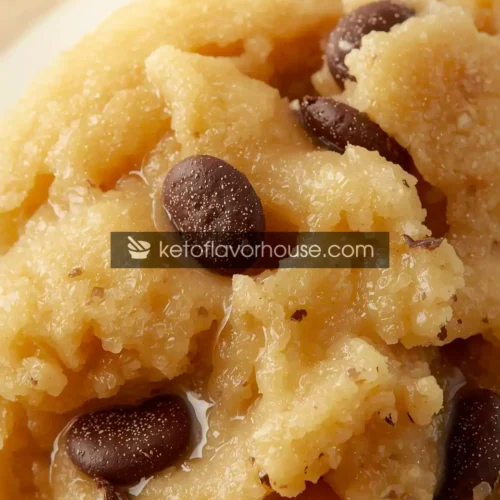
Bariatric Cookie Dough Recipe (No-Flour & Low-Sugar) Recipe
Ingredients
- 1 cup almond flour
- 2 scoops vanilla protein powder
- 3 tbsp sugar substitute
- 2 tbsp Greek yogurt
- 2 tbsp almond milk
- 1 tsp vanilla extract
- ½ tsp cinnamon
- Pinch of salt
- 2 tbsp sugar-free chocolate chips optional
Instructions
- Whisk almond flour, protein powder, sweetener, cinnamon, and salt.
- Stir in yogurt, almond milk, and vanilla until dough forms.
- Fold in chocolate chips.
- Scoop into small balls. Chill if desired.
- Enjoy as dough or bake at 350°F for 8–10 minutes.

